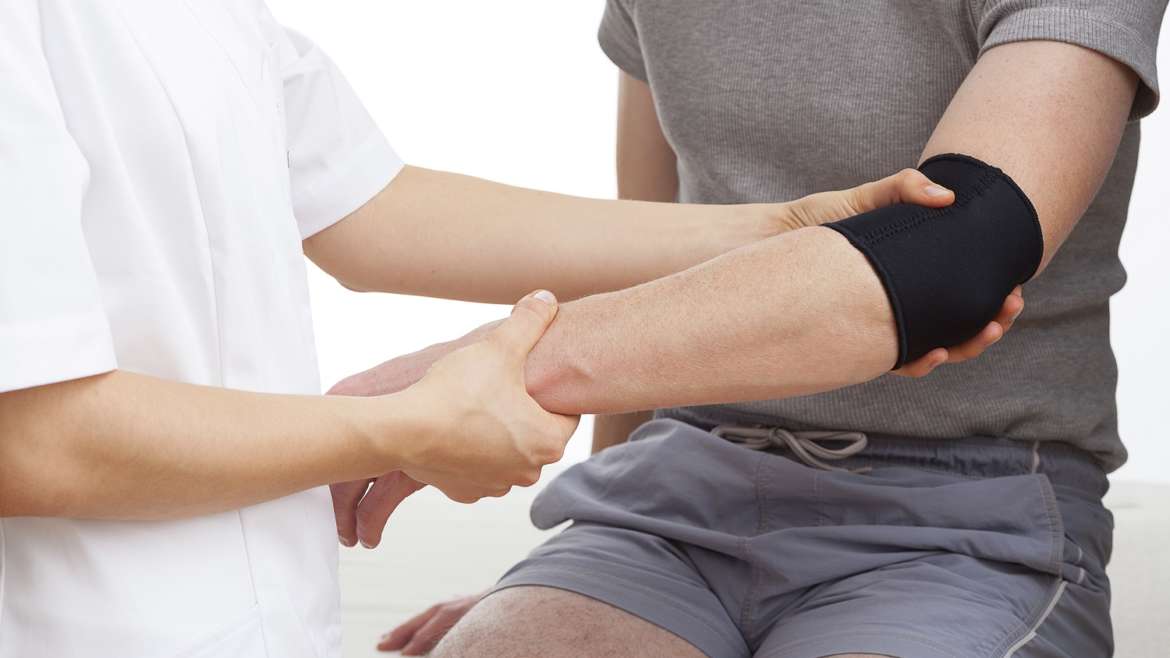Tennis elbow is an incredibly common condition suffered by as many as 40% of tennis players (in addition to those who enjoy certain other sports, such as golf, although this is a slightly different condition).
However despite its prevalence it’s still known as a particularly stubborn condition to treat, and the misinformation and misunderstandings of when and what treatment should be sought leads to approximately 10% of all cases requiring surgery.
But what is tennis elbow, how it is sustained and what Osteopathic treatments are available for the effective treatment of the condition (as well as how to avoid it in the first place)?

What is tennis elbow?
Tennis elbow is a condition that causes both pain and tenderness around the outside of the elbow (notably Golfer’s elbow differs in that the pain is felt around the inside of the elbow).
The elbow joint has muscles that surround it that are used for moving your elbow, wrist and fingers. The tendons are responsible for the control of your forearm, and are tissues that attach between the muscle and bone in your elbow.
When the muscles and tendons in your elbow consequently become strained, they suffer tiny tears and inflammation, which can then turn into a hard, bone like lump (known officially as the lateral epicondyle).
You may suffer pain from the following:
- When lifting your arm
- When bending your arm
- When attempting to grip a small object such as a pen or knife
- When twisting your forearm (such as when opening a door)
How do you get tennis elbow?
Both tennis elbow and golfer’s elbow can be caused by repetitive strain, or may merely come about over time as a sign of wear and tear. They may also be brought on by a sharp movement or pull of the forearm.
How to avoid tennis elbow
- Train with a certified coach – he or she will be able to provide bespoke advice as to how to hit correctly
- Potentially switch to a two-handed backhand if you find a one-handed grip to be painful
- Try to relax your grip as much as possible between points
- Use a grip that is as soft as possible to effectively cushion your elbow from the blows
Osteopathic treatment for tennis elbow
Tennis elbow is a ‘self-limiting condition’ which in layman’s terms means that it will heal by itself given enough time. However the recovery period for this condition is unpredictable, and picking up the racket before the injury has completely healed can exacerbate the condition. What’s more, for some, the symptoms of tennis elbow can last for as long as 1.5 to 2 years.
Osteopathy is a treatment that can speed up recovery, and we will recommend a range of treatments including massage and manipulation (of the elbow, wrist, neck and upper back joints). Taping can also provide support and recovery from tennis elbow, especially when used in conjunction with other treatments.
Beyond this it may be acupuncture that provides for the most effective treatment of tennis elbow – with five out of six extensive studies showing that it provides better results than alternative treatments.
Finally, as osteopaths, we can help you understand the condition, and more-to-the-point, how you can avoid the injury again by providing expertise and advice on elbow brace support or sports strapping.



Add Comment